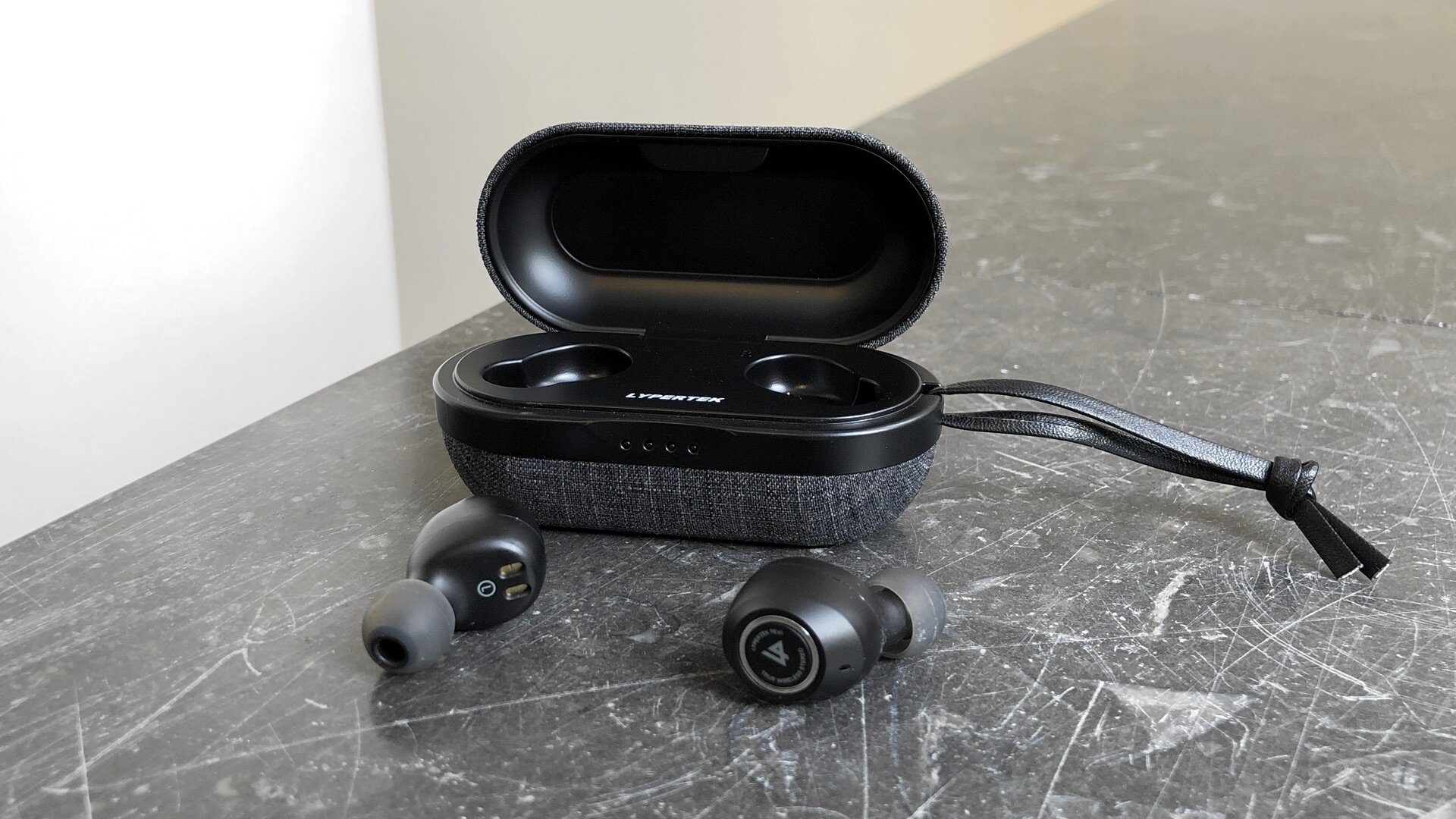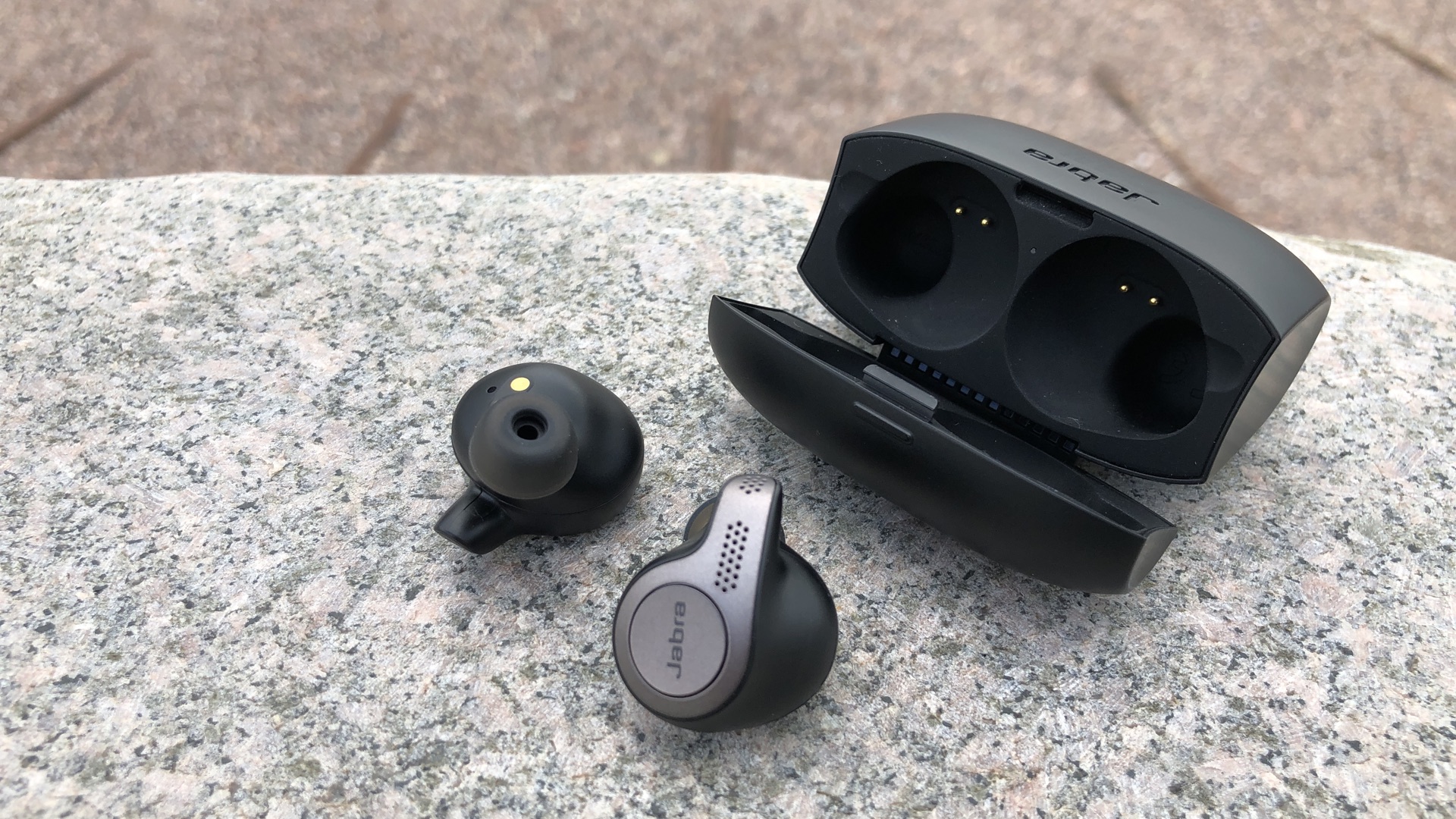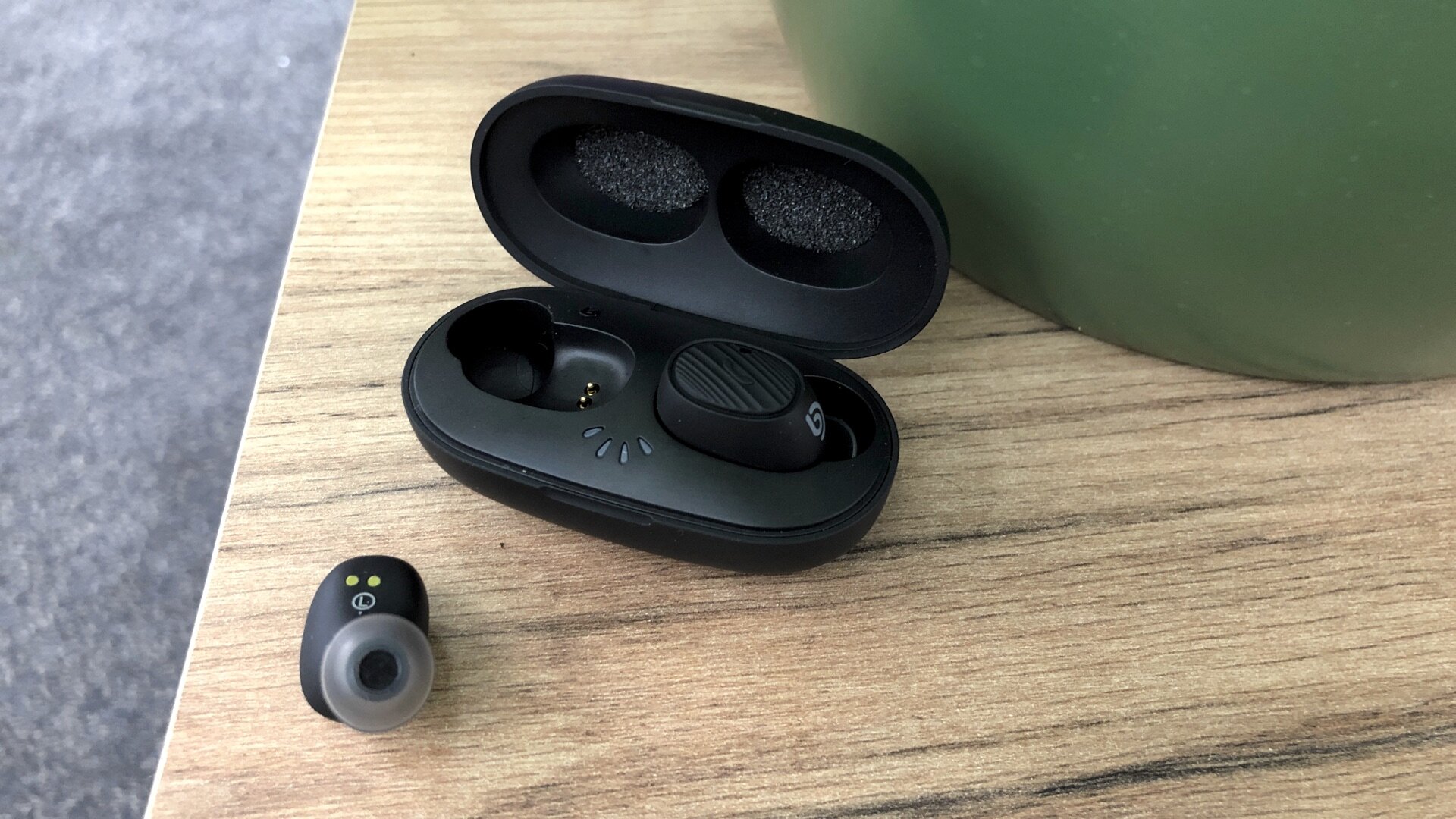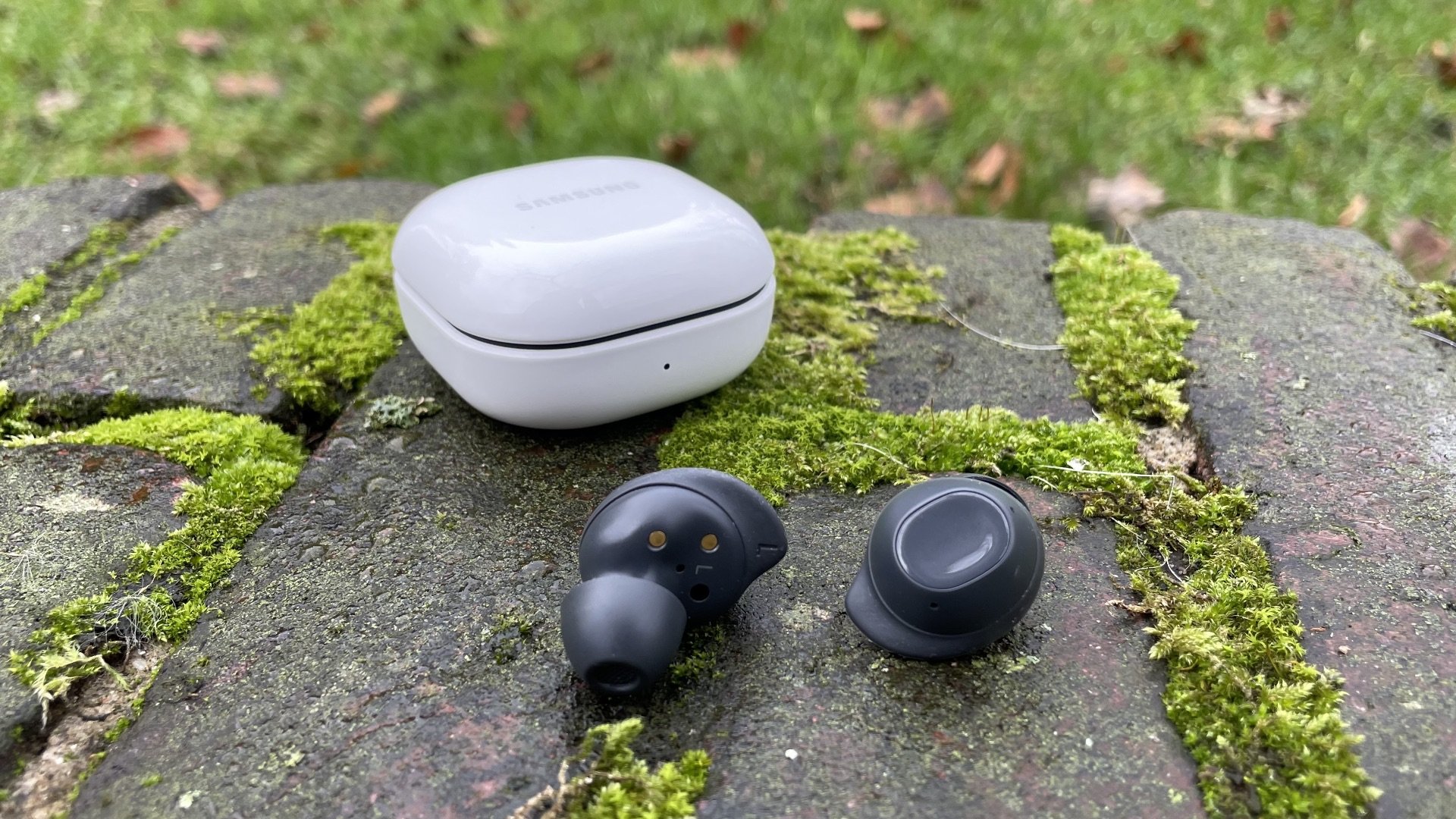TWS true wireless earphones - under $100
FIVE STARS - The return of audio brand Aiwa is not only a total surprise - it is a revelation for audio lovers seeking a pair of mid-centric sounding true wireless earphones for a good price.
Aiwa Prodigy Air TWS specs:
Bluetooth 5.0
IPX5 water proof (rain and sweat resistant)
7 hours listening on a full charge
Charging case can charge earpieces fully 3 times
Comes with 3 sets ear tips and a micro-USB charging cable
Below this review you can find direct comparisons between the Aiwa Prodigy Air TWS vs Bomaker Sifi, Lypertek Tevi, Shanling MTW100 Balanced Armature and Jabra Elite 65t.
Update September 2020: Due to increased overall competition with more functionality and/ or better sound, this TWS has been decreased in overall score. Check out the best earbuds on the Leaderboard.
Design, charging and comfort
Once a subbrand of Sony, the brand name and outings of Aiwa has now been picked up by an American startup, producing their products in China. The fun thing is, the Prodigy Air looks like a product that would come out of the Sony lineup. The earpieces look and feel premium with a copper-like filling on the outside. The buttons central in the earpieces, carry the Aiwa-logo and are surrounded by a metallic lining.
On the inside, the earpieces are egg-shaped. They're large enough to fill up your ear and stay in tight, even though the nozzles and ear tips are very short. It won't be the most comfortable fit for everyone - and just like on the Wavefun X-Pods 3, for example, you need to wiggle a bit to get the best fit and most out of the sound. With the same fit, the Air offers a lot of passive noise isolation. Furthermore, the lights on the earpieces only shine when pairing - they don't blink when you play music on them.
The charging case looks more generic than the earpieces, in black with just the red front saying Aiwa on the cover. It has a bit of weight and a hook to let you attach a strap. Three quickly dimming LED-lights on the front indicate the charging status. The battery life of the Prodigy Air TWS is spot-on, with around 7,5 hours on medium listening volume and three recharges from the case.
Connectivity and controls
The Prodigy Air has physical buttons that you have to press to control them. Touching them doesn't push them too deep in your ears and doesn't hurt - the buttons work fast and convenient.
A single press plays or pauses the music, pressing twice on the right side increases the volume; twice on the left side decreases it. Doing so, you'll hear a slight, handy beep. That beeps misses when you need to skip or return a song, with a long-press on the right or left side. Sometimes you'll press too short and pause the music, rather than change the song. With three taps, you activate the voice assistant of your smartphone.
The connectivity on the Prodigy Air is convenient. The earpieces pair and connect easily, and you can switch between listening to one or two buds at any given time. The Bluetooth 5.0 signal stays stable up to around ten meters and holds steady in areas crowded with wireless signals.
Calling and watching movies
The Prodigy Air doesn't perfectly sync audio and video in the YouTube app on iPhone, like some new competitors do. Audio-video synchronization is good on other video apps and also works smoothly on Android devices, however. There is noticeable delay in the sound when playing games.
It's perfectly doable to take a phone call with the Aiwa's. Your voice comes through clearly when you're indoors and also when you're outside. The Air aggressively tries to diminish surrounding noise, which sometimes results in a metallic edge to your voice and sound on both end of the lines. But: it succeeds mostly.
Sound quality of Aiwa Prodigy Air TWS: Mid-centric, intimate sweetness
The Aiwa Prodigy Air TWS may not be love at first hearing. It is tuned very different than most competitors.
Foremost, it puts way more emphasis on the center-mids than most competitors, which often tend to elevate just the bass and the vocals. Aiwa doesn't. It's about the mids here. The approach makes both male and female vocals sound clear and displays them full of nuances. Instruments benefit from this approach as well. Guitars, drums, violins, and pianos sound natural and detailed on the Aiwa, and in perfect balance with each other. They're never a single instrument that takes the main stage, nor are they dragged towards the bassline or bright areas. Unfortunately, lower-mids don't enjoy the same layeredness and full-bodied character as the center-mids.
The bass on the Air TWS is something else. The biggest part of the bass, even the hard slams in dance songs, sounds so deep here, it kind of, somehow becomes the sub-bass. The bass you feel. Once you acquire the right fit by wiggling the earpieces in your ears, the bass goes deep and rumbles fiercely in your ears.
The soundstage adds to the differences between the Aiwa Air and its many competitors. Rather than expanding as wide as possible, the Aiwa keeps it compact. Instruments, basses, and voices feel very close to you. Vocals often feel 'in between your ears'. Surrounding it are instruments close on the left and right to you. This tuning should not be mistaken for a dull sound without a soundstage at all - where all the sounds are just thrown onto a single pile. The Aiwa Air TWS resolves so much detail and places instruments so precise, you still feel surrounded by the different instruments and electronic aspects of the music. This is perhaps the most intimate soundstage heard on an affordable truly wireless earphone so far.
This sound signature works fantastic for easier going, higher quality recordings, with lots of details to be discovered. More intimate genres shine on the Aiwa - vocal ballads, singer-songwriter pieces, blues, jazz, dark electronic music, and audiophile pop songs from the likes of Leonard Cohen, Diana Krall, and Steely Dan: they feel right at home on the Air TWS.
The sound signature isn't for all genres. For starters, the small soundstage makes you lose some of the spaciousness of crowd-pleasers like the Bomaker Sifi or Mpow T5/ M5. Also, popular dance tracks and upbeat pop songs which have elevated vocals from itself and benefit from a fat bass-slam, can sound a bit thin on the Prodigy Air. They benefit from further extended highs, like on the Whizzer B6. The intimate soundstage also causes some trance/ hardcore tracks sounds a bit claustrophobic, rather than giving them their typical stadium vibe.
The Aiwa Prodigy Air may not be the most versatile wireless earphone, but it can sound great in vocal-centered songs.
Selected Comparisons
Aiwa Prodigy Air vs Shanling MTW100
The Shanling MTW100 with Balanced Armature ($90) is another excellent wireless earphone with lots of presence in the mids, making instruments sound natural and lifelike. The Shanling has a bigger emphasis on lower-mids, making drums and guitars sound a bit warmer and darker than on the Air TWS. The soundstage on the MTW100 is bigger too; detail retrieval is impressive on both.
Aiwa Prodigy Air vs Lypertek Tevi
The much-praised Lypertek Tevi ($100) has more extended highs than the Air TWS, and a more airy sound. It also sounds thinner due to less presence in the lower-mids and bass, however. The bass of the Tevi is more minimal, with the bass of the Air TWS rumbling deeper and more often.
Aiwa Prodigy Air vs Jabra Elite 65t
With its color scheme and shape of earpieces, the Air TWS reminds a bit of the Jabra Elite 65t ($125). The sound is a different story. The Jabra extends its highs much further and has a muddier bass. It also sounds quite artificial next to the more natural Aiwa - which also has way more detail and emphasis on the mids.
Aiwa Prodigy Air vs Bomaker Sifi
The Bomaker Sifi ($40) is the most versatile, mid-centric earphones under 50 dollars. Like the Aiwa, it has an above-average presence and quality of mids. The Sifi has a bigger soundstage than the Air, with more space in between the different instruments and details. The Aiwa has a more intimate soundstage, and its bass is more vibrant.
Verdict
The Aiwa Prodigy Air TWS looks and feels premium, and sounds premium too. It rocks a balanced mid-centric sound with an intimate soundstage filled with details - although it's not suited for all genres.
Four STARS - very good
Buy Aiwa Prodigy Air/ check current price:
The review of the Aiwa Prodigy Air was requested to me by De La Sal. Thanks! I then reached out to Aiwa to receive the Aiwa Prodigy Air TWS for testing and reviewing purposes. I test and review all audio products equally honest - read about it here.
Consider buying this earphone? I'd really appreciate it if you use the links in this article. It won't cost you extra, yet it will financially support me a bit in my ongoing quest for great affordable audio. <3
Also read:
Leaderboard: All wireless earphones reviewed













